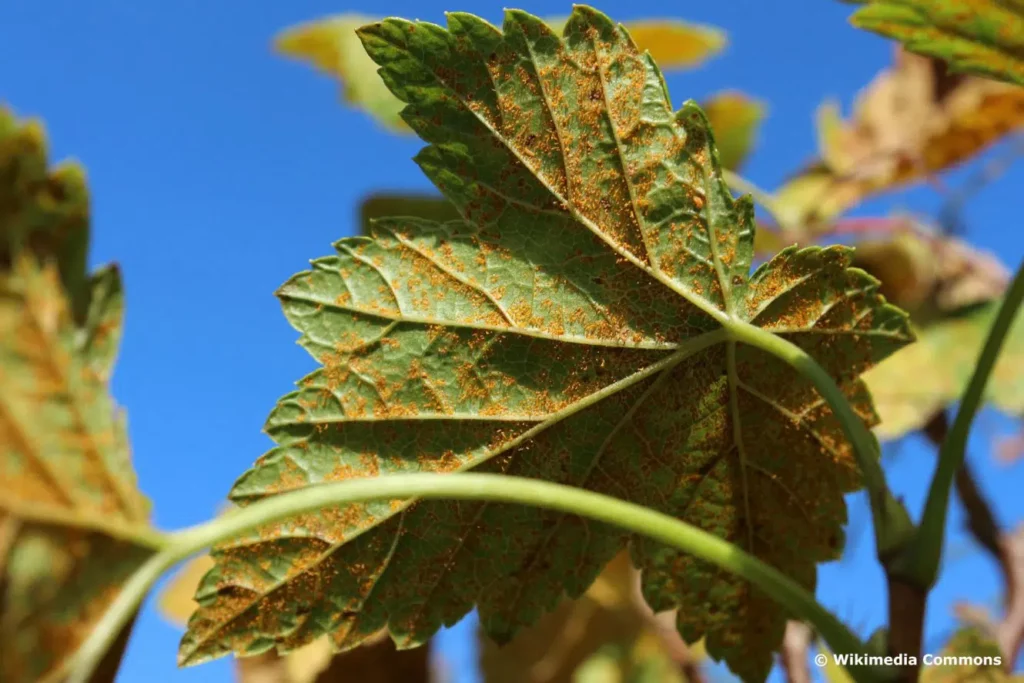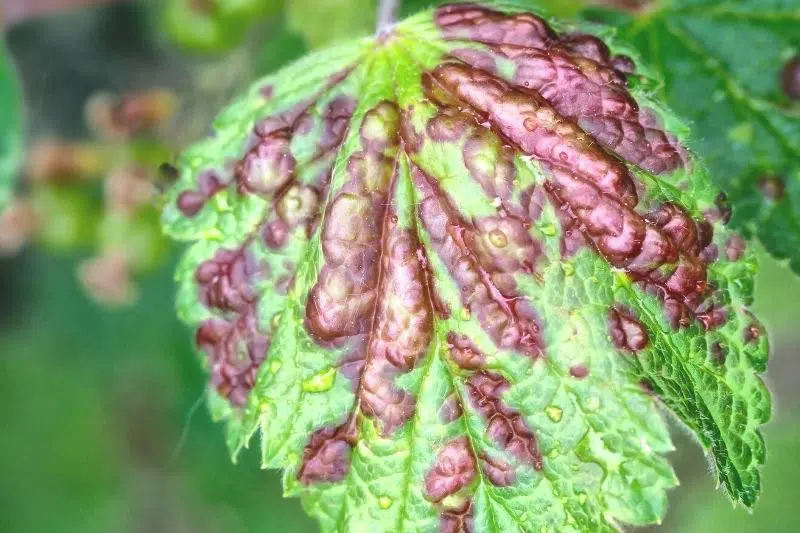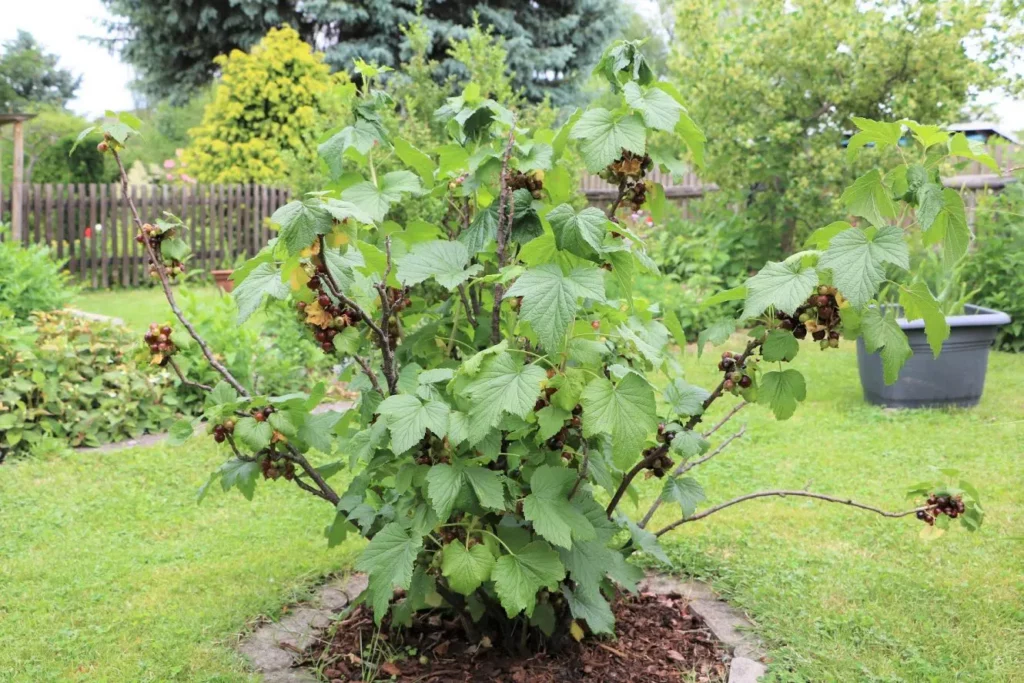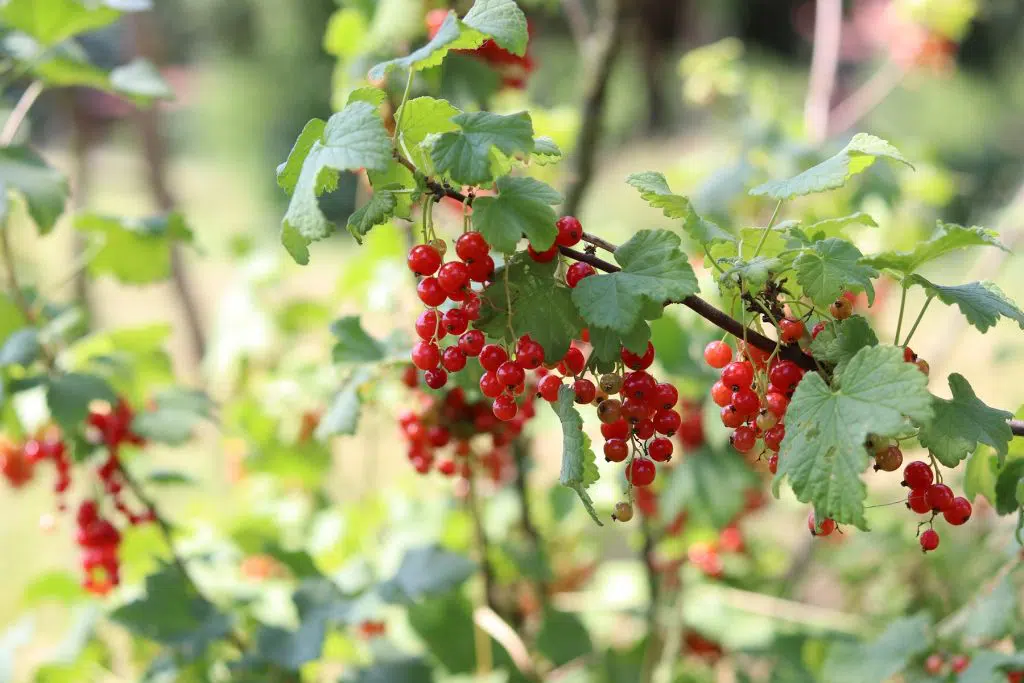Currant bushes are relatively hardy, as well as easy to care for, and on top of that produce delicious fruit. However, currants can sometimes get yellow and even red leaves. Read here how to react correctly.
- various causes of red and yellow leaves on currants.
- care mistakes, diseases and pest infestation
- react quickly and correctly
- take preventive measures
- sufficient space prevents rapid transmission of infections
Contents
Various causes
Even though currants (Ribes) are very hardy, discoloration of the leaves can sometimes occur. The causes for this can be very different such as
- Care mistakes
- fungal diseases or
- pest infestation.
Care errors
Common care errors can cause yellow leaves on the currant. In addition, the location is also important, otherwise it is easy to foliage discoloration and subsequent leaf fall.
These mistakes are often made in the care:
- too dry root zone, i.e. lack of water
- too light and sandy soil, does not hold water
- waterlogging in heavy soils
- location too shady
- lack of nutrients: mainly nitrogen, iron, magnesium, manganese
Note: Currants do grow in shade or partial shade. However, the harvest then leaves much to be desired. The acid content in the berries is then also comparatively high.
Leaf spot disease
This disease is caused by the tubular fungus Drepanopeziza ribis. It usually occurs in humid weather and is spread by wind. The fungus overwinters in the foliage. Mainly red (Ribes rubrum) and white (Ribes sativa) currants are affected by this disease.
Symptoms
- first mottled leaves in lower parts of the shrub
- initially yellowish spots on top of leaves
- then turn dark brown to black
- spots later cover entire leaf
- leaves turn yellow
- leaf edges dry and curl up
- finally early leaf shedding
- shoots turn brown
First aid
- remove infested leaves
- rake fallen leaves together
- dispose of both in the garbage
- after sprouting in spring (repeated if necessary) treatment with copper spraying agent
- use of horsetail extract for strengthening
Direct control with pesticides is not possible, as none are approved for small and home gardens.
Note: Leaf drop disease can also affect jostaberries (Ribes x nidigrolaria) and gooseberries (Ribes uva-crispa).
Column rust
This is a fungal disease caused by the fungus Cronartium ribicola. It mainly affects blackcurrants (Ribes nigrum), which later show rust-red leaves. The fungus overwinters on five-needled pines (Pinus) such as lachrymose pine (Pinus wallachiana), maiden pine (Pinus parviflora), or jack pine (Pinus cembra).
Symptoms

- pustules visible on leaves in autumn
- lower side of leaf orange-red colored
- upper side brownish
- Leaves dry up
First aid
- remove all infested leaves and shoots
- then dispose of in the trash
- thus spore transmission is interrupted
Note: Stopping the disease is only possible if there are no more pine trees within 100 meters of the currants.
Currant blister aphid
The currant blister aphid (Cryptomyzus ribis) is a whitish to pale yellow aphid two to three millimeters in size. Its conspicuous damage pattern causes red and yellow leaves on currants.
Symptoms

- bubble-shaped, reddish-brown bulges on leaves
- yellow leaves on white and black currants
- red leaves on red currants
- leaves curled and deformed
- sooty dust formation on heavily infected areas
- leaves die
First aid
- remove all affected leaves
- then dispose of in the trash
- Use of ladybugs and hoverflies
- mixture of low-fat skimmed milk and water (ratio 1:2)
- mixture of olive oil and water (ratio 1:9)
- Curd soap solution (50 g soap to 1 l warm water)
- Nettle broth
- Shoot dieback
The causative agent is the fungus Botrytis cinerea. It overwinters in autumn leaves, on shoots and in diseased berries.
Symptoms
- hardly any formation of leaves
- formed leaves turn yellow
- stunting of shoots or
- no formation of these
- no berry harvest
First aid
- harvest all fruits, even rotten or diseased ones
- dispose of autumn leaves and fallen berries in the garbage
- pruning in autumn
Preventive measures
Appropriate care and the right choice of location not only ensure healthy growth of currants and a bountiful harvest each year, but they also make it more difficult for disease and pest infestation to occur.

To do this, just a few measures are enough:
- choose robust varieties
- choose a bright, sunny and wind-protected location
- leave enough space (planting distance between shrubs 100 to 150 cm)
- plant in loose, well-aerated, humus-rich and slightly acidic soil
- water abundantly during dry periods, but avoid waterlogging
- mulch regularly with grass cuttings or straw
- fertilize for the first time in early spring, then in mid-May
- use mature compost or special berry fertilizer
- cut back regularly
- Spray with nettle manure or horsetail broth to strengthen the plant.
Note: When watering the leaves should not be wetted, otherwise the appearance of fungal diseases will be favored.
Frequently asked questions
Why does the currant bush loses its flowers and fruits?
Sometimes flowers and fruits may fall off the bush in masses (trickling). There are several reasons for this. Drop of flowers may be favored by the occurrence of late frosts during flowering. In addition, a lack of fertilization of the flowers can also be the reason. Furthermore, care errors such as drought during flowering and fruiting, as well as a lack of nutrients lead to a drop in flowers and fruit.
How to properly prune currants?
Pruning of red and white currants must be done once a year in early spring or immediately after harvest. This involves removing two to three of the oldest main shoots near the ground. Thinning pruning then leaves only two to three of the strongest ground shoots. For black currants, pruning is done in the spring. The oldest shoots are removed above the ground, and all remaining fruiting shoots are removed just above a young side shoot.
What to consider when planting currant bushes?
Planting shrubs is carried out deeply, so it is necessary to prune the plant. To do this, remove all weak and damaged shoots at the attachment point, and the remaining shoots are shortened by a third. Then dig a planting hole and put the bush. The root ball should be three fingers wide below the surface of the soil. Then soil is filled and trampled. Finally, the shrub is watered with 10 liters of water and apply a mulch layer of leaf or bark compost.


